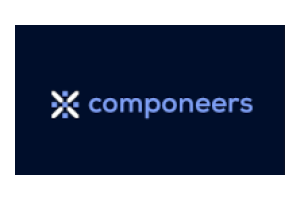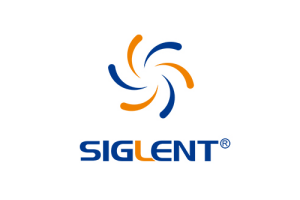Interview: Stelios Diamantidis, Synopsys
More and More Companies Want to Design ICs
Despite increasing complexity, interest in developing chips themselves is growing. In the future, the use of AI in EDA tools should not only help to better manage complexity, but it should prepare expert knowledge in such a way that newcomers can productively develop ICs more quickly.
? What challenges are semiconductor manufacturers, IC developers and EDA tool providers currently facing?
! Stelios Diamantidis: Certainly there are a lot of challenges, and I think the main driver of today’s semiconductor world is the transition from the “Classic Moore“ age or “Moore’s Law,“ to what Synopsys CEO, Aart de Geus, describes as the “SysMoore Era.“ Over the past decade or so, semiconductor process technology has become so much more complex, and while transistors continue scaling towards Angstrom-size features, the silicon technology ‘push’ is somewhat leveling off.
At the same time, the world is experiencing an unprecedented economic ‘pull’ towards Smart-Everything, with new products and services requiring 1,000 times or more powerful compute and bringing about exponential growth in systemic complexity. In this SysMoore era, there need to be new design paradigms that fuse Classic Moore with innovations built for systemic complexity. The EDA industry is preparing for these changes by investing in new technologies and tools that can help semiconductor manufacturers and IC developers address these challenges.
? The challenges are continuing to grow exponentially, where does EDA come into it?
! Diamantidis: Well, productivity needs to also grow exponentially! EDA is of course no stranger to enabling engineering productivity; over the past nearly four decades, EDA has delivered 10^7 times better productivity for the semiconductor industry to make everything that has been built to date happen.
The challenge for us is to continue being the enabler and catalyst of innovation across the industry. However, the way we prepare for that is with exponential grade productivity boosts with the way people design chips, and the clear driver to help us do so is AI.
? How will semiconductor technology evolve in the coming years and how is the EDA industry preparing for it?
! Diamantidis: The semiconductor industry is expected to continue evolving rapidly over the coming years, and the EDA industry will play a critical role in enabling this evolution by developing new tools and technologies to support the latest trends. From a silicon viewpoint, there is certainly a clear trend towards multi-die topologies. Today these are mostly 2.5D but in the future we expect to see many designers going to full 3D structures, while looking to exploit exponentially accelerating connectivity solutions.
Heterogeneous integration of die built-to-purpose, in specific process technologies, will be key here. Memory will continue to come closer to compute, as will sensors. From an architectural viewpoint, these “systems of chips” – versus today’s “systems on chip” – are already software-defined and this trend will surely accelerate. In addition, software itself will become more and more workload-driven, while workloads themselves will become more representative of real-life applications through the adoption of electronics digital twins.
? Only a few semiconductor manufacturers rely on the smallest structure sizes and the most advanced manufacturing techniques. Most use established manufacturing processes. Will this "dichotomy" – "high end" here, "low cost" there – become more entrenched in the future?
! Diamantidis: The smallest structure has always been the main driver for power, performance, and area. The folks designing the fastest, most power-efficient devices will always be looking to the next manufacturing technology. What has changed is the rate and the ability to do so cost-effectively, and that is what is driving even the giants of the semiconductor world to rethink their strategies. However, I don’t think larger-structure-based designs are necessarily less advanced than smaller-structure-based designs.
We see established-node designs that are incredibly difficult to design and manufacture, because they push the envelope in other areas or in other aspects of the proverbial optimization space. With edge computing and IoT devices integrated into things we wear and interact with daily; manufacturers must operate in real world conditions – like extreme temperature and humidity ranges, and stress from vibration and noise – which a small structure size chip that lives in a data center does not.
? Which applications/manufacturers rely on ICs with the smallest structures?
! Diamantidis: We see performance-hungry designs, like CPUs and GPUs, continue to be at the forefront of new node adoption. These can be both the large chips we see going into data centers but also, increasingly, chips in the mobility and transportation sectors.
? What does all this mean for the electronics industry and for EDA suppliers like Synopsys?
! Diamantidis: For the electronics industry, every customer has a unique mix of power, performance, and area objectives, and zero room for margin. Therefore, it’s all about solutions that deliver the perfect mix to the market – fast and at a low cost – and doing so across an infinite number of variations of applications. That is the challenge.
? What is the current significance of the use of AI in EDA tools and in simulation?
! Diamantidis: It has historic levels of significance! If you look back at how things were done in the 70s, people designed and drew circuits by hand – so we’ve clearly come a long way since then. Now, with the use of AI in EDA tools, engineering teams are automating more of the design process, allowing them to reduce design time and improve design quality.
? How and in which areas will AI change the work of IC designers?
! Diamantidis: AI will boost the entire design stack. We recently introduced Synopsys.ai, the industry’s first suite of AI-driven solutions for the design, verification, testing and manufacturing of the most advanced digital and analog chips. The suite extends DSO.ai, our digital design space optimization solution which has now been proven to deliver best PPA solutions in over 200 commercial tapeouts.
- More and More Companies Want to Design ICs
- “We are now entering the age of AI Assistants for electronic system design.”









